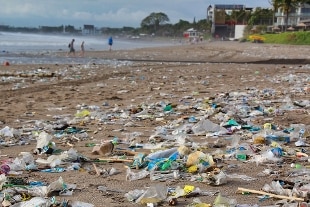Climate, May 2020 the hottest in the world
Climate.
North Pole without ice in the summer before 2050
Share
June 16, 2020 "The plastic emergency afflicts all the waters of the planet, but the Mediterranean has a fundamental difference: being a closed sea, currents return 80% of plastic waste to the coasts. Result: for every kilometer of coastline , more than 5 kilograms are accumulated per day ". The painting is from the WWF.
Europe and the Mediterranean
Europe - it is explained - is the second largest producer of plastic in the world. Proof that plastic, in many cases, is not disposed of properly or effectively. Every year 570 thousand tons of plastic end up in the waters of the Mediterranean Sea. To give an idea of what is discharged into the sea, one has to imagine 4.7 billion disposable plastic cutlery floating every day. 3,600 per second.
Where does it come from
Coastal activities - explains the WWF - are responsible for half of the plastic that pours into the Mediterranean Sea, while 30% is transported from the land by rivers. The rest comes from marine activities.
A worldwide pollution
From the Mariana Trench, to Everest, to the glaciers of the poles, more or less large fragments of plastic have been found practically everywhere, even in plankton, crustaceans, molluscs, fish, marine mammals.
Data
Plastics and microplastics represent 70% to 90% of waste at sea.According to the most recent estimates, today there are over 150 million tons of plastic in the oceans of the planet: every year we pour over 8 million.
The United Nations: more plastic than fish
According to UNEP, the United Nations Environment Program, 15% of waste floats on the surface, another 15% remains almost in the middle and 70% settles on the seabed.
Without a rapid and effective paradigm shift by 2050 there will be more plastic by weight than fish.
Emergency
In 2018, UNEP included the problem of plastic in the oceans among the 6 most serious environmental emergencies, with climate change, ocean acidification and the loss of biodiversity.

